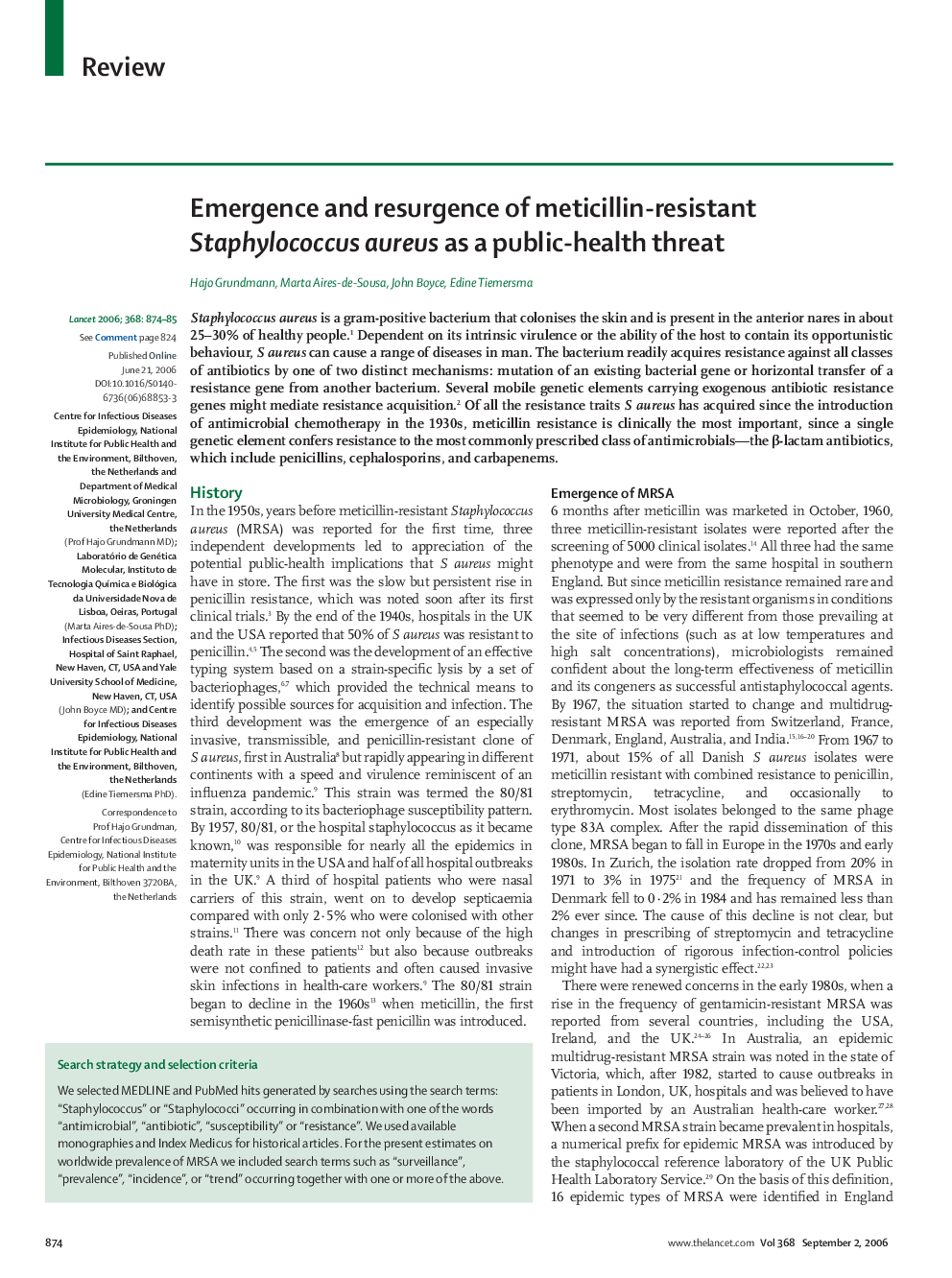| Article ID | Journal | Published Year | Pages | File Type |
|---|---|---|---|---|
| 3498118 | The Lancet | 2006 | 12 Pages |
SummaryStaphylococcus aureus is a gram-positive bacterium that colonises the skin and is present in the anterior nares in about 25–30% of healthy people. 1 Dependent on its intrinsic virulence or the ability of the host to contain its opportunistic behaviour, S aureus can cause a range of diseases in man. The bacterium readily acquires resistance against all classes of antibiotics by one of two distinct mechanisms: mutation of an existing bacterial gene or horizontal transfer of a resistance gene from another bacterium. Several mobile genetic elements carrying exogenous antibiotic resistance genes might mediate resistance acquisition. 2 Of all the resistance traits S aureus has acquired since the introduction of antimicrobial chemotherapy in the 1930s, meticillin resistance is clinically the most important, since a single genetic element confers resistance to the most commonly prescribed class of antimicrobials—the β-lactam antibiotics, which include penicillins, cephalosporins, and carbapenems.
